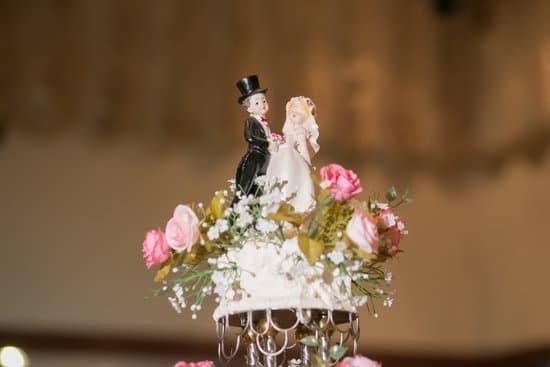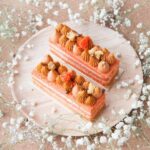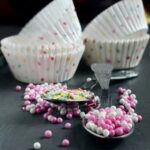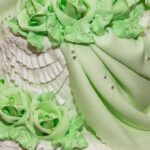Icing plays a crucial role in elevating the aesthetic appeal of cakes, making it a fundamental aspect of cake decorating. Whether you’re a novice baker or an experienced pastry chef, mastering different icing techniques can immensely enhance the overall look and taste of your creations.
In this article, we will delve into the world of icing recipe cake decorating, focusing on various types of icing, essential tools needed for the craft, step-by-step recipes, expert tips, creative techniques, flavor variations, and troubleshooting solutions.
When it comes to cake decoration, the type of icing used can significantly impact the final result. From classic buttercream to elegant fondant to versatile royal icing, each type offers unique qualities that cater to different design preferences and tastes. Understanding the characteristics of these icings and knowing when to use them can empower you to unleash your creativity in decorating cakes for any occasion.
In addition to exploring different types of icings, having the right tools is essential for achieving professional-looking results in cake decorating. From offset spatulas to piping bags and tips to turntables, equipping yourself with the necessary tools will streamline your icing process and ensure precision in creating intricate designs. Stay tuned as we provide a comprehensive guide on must-have tools for aspiring cake decorators, along with step-by-step instructions on crafting basic buttercream icing from scratch.
Types of Icing
When it comes to cake decorating, choosing the right type of icing is crucial for achieving the desired look and taste of your finished creation. There are several options to choose from, each with its own unique characteristics and uses. One of the most popular choices is buttercream icing, known for its creamy texture and versatility. Whether you’re looking to pipe intricate designs or create smooth finishes, buttercream is a go-to option for many decorators.
Another common type of icing used in cake decorating is royal icing. This type of icing dries hard, making it perfect for creating elaborate decorations that need to hold their shape. Royal icing is often used for detailed piping work, such as intricate flowers or lace patterns. Fondant is another popular choice among decorators, known for its smooth finish and ability to be molded into different shapes. Fondant is ideal for creating sculpted cakes or clean, modern designs.
In addition to buttercream, royal icing, and fondant, there are other types of icing worth exploring for your cake decorating projects. Ganache, for example, made from chocolate and cream, creates a rich and glossy finish that is perfect for decadent desserts.
Cream cheese frosting offers a tangy twist on traditional buttercream and pairs well with carrot or red velvet cakes. By experimenting with different types of icing recipes, you can discover new flavors and techniques to take your cake decorating skills to the next level.
Essential Tools for Icing
When it comes to cake decorating, having the right tools can make all the difference in achieving professional-looking results. As an aspiring cake decorator, investing in essential tools is crucial for creating beautiful and intricate designs with your icing. Here is a comprehensive guide to the must-have tools that every cake decorator should have in their arsenal:
Piping Bags and Tips
Piping bags are essential for applying icing to cakes in various designs and patterns. They come in different sizes and materials, such as disposable plastic or reusable cloth. Coupled with piping tips of different shapes and sizes, decorators can create anything from intricate roses to simple borders. Experimenting with different piping tips can bring versatility and creativity to your cake decorating projects.
Offset Spatula
An offset spatula is a tool that every cake decorator should have for spreading icing smoothly and evenly onto cakes. Its angled blade allows for better control and precision when working on cakes of different sizes. Whether you’re crumb-coating a cake or adding the final layer of frosting, an offset spatula is indispensable for achieving a flawless finish.
Turntable
A turntable is a rotating stand that allows decorators to easily spin their cakes as they work on them. This tool is essential for achieving even layers of icing around the sides of the cake and creating smooth finishes on top. Using a turntable makes it easier to decorate cakes effectively, especially when using techniques like buttercream smoothing or piping intricate designs.
Ensuring you have these essential tools will set you up for success in your cake decorating endeavors. Investing in quality tools will not only make the process more efficient but also enhance your ability to create stunning designs with your icing recipes for cake decorating.
Step-by-Step Icing Recipe
Buttercream icing is a classic choice for cake decorating, known for its smooth texture and delicious flavor. Making buttercream from scratch may seem daunting at first, but with the right guidance, it can be a fun and rewarding process. Here’s a step-by-step tutorial on how to make a basic buttercream icing that will elevate your cakes to the next level:
- Ingredients:
- 1 cup (2 sticks) of unsalted butter, softened
- 4 cups of powdered sugar
- 2 tsp of vanilla extract
- 2-4 tbsp of heavy cream or milk
- Instructions:
In a mixing bowl, beat the softened butter until smooth.
Gradually add the powdered sugar, one cup at a time, mixing well after each addition.
Add the vanilla extract and 2 tablespoons of heavy cream or milk.
Continue to mix on high speed until the icing is light and fluffy. If the consistency is too thick, add more cream or milk until desired thickness is reached. - Usage:
Once your basic buttercream icing is ready, you can use it to frost cakes, cupcakes, cookies, and other baked goods. You can also add food coloring to create colorful designs or flavor extracts to customize the taste profile based on your preferences.
To make a simple buttercream icing, you will need:
By following this simple recipe and adjusting it according to your taste preferences, you’ll be well on your way to mastering the art of buttercream icing for cake decorating. Experiment with different flavors and colors to create stunning edible works of art that are sure to impress your family and friends at any celebration.
Tips and Tricks for Perfect Icing
Decorating a cake with icing can be both exciting and daunting, especially when aiming for that perfect finish. Whether you’re a beginner or a seasoned baker, achieving smooth and flawless icing can take some practice. Here are some expert tips and tricks to help you master the art of icing for stunning cake decorations.
Preparation Is Key
Before you start decorating your cake with icing, it’s crucial to ensure that your cake is properly prepared. Make sure your cake layers are levelled, chilled, and crumb-coated before applying the final layer of icing. This will create a smooth base for your icing to adhere to and prevent any crumbs from ruining the finished look.
The Right Consistency
One of the most important factors in achieving perfect icing is getting the right consistency. If your icing is too thick, it will be difficult to spread smoothly, while if it’s too thin, it may slide off the sides of the cake. Follow your chosen icing recipe carefully and make adjustments as needed by adding small amounts of liquid or powdered sugar until you reach the desired consistency.
Tools of the Trade
Having the right tools can make a significant difference in achieving flawless icing on your cakes. Invest in quality offset spatulas, bench scrapers, piping bags, tips, and turntables to assist you in creating professional-looking designs.
Practice using these tools to develop your skills and enhance the overall appearance of your decorated cakes. By incorporating these tips into your icing process, you’ll be well on your way to creating visually stunning cakes that not only taste delicious but also impress anyone who sees them.
Creative Icing Techniques
When it comes to cake decorating, mastering different icing techniques can take your creations to the next level. Whether you’re a beginner or an experienced baker, exploring innovative ideas for using icing can add depth and creativity to your designs. One popular technique is piping, which involves using a pastry bag and various tips to create intricate designs, borders, and lettering on cakes. This method allows decorators to unleash their creativity and personalize each cake with unique patterns.
Another creative icing technique is called “spatula painting,” where decorators use an offset spatula to create beautiful textures and gradients on the surface of the icing. This method gives cakes a more artistic and hand-painted look, perfect for special occasions like weddings or birthdays.
Additionally, using stencils or molds can help achieve professional-looking patterns and designs with ease. By incorporating these tools into your decorating routine, you can experiment with different shapes and motifs to elevate your cake decorations.
Moreover, exploring the art of brush embroidery can create stunning floral designs on cakes using only buttercream or royal icing. This delicate technique involves piping thin lines of icing onto a cake surface and gently brushing them to create a textured effect that resembles embroidery.
With practice and patience, decorators can master this technique and add a touch of elegance to their creations. From simple swirls to intricate lace patterns, there are endless possibilities when it comes to creative icing techniques in cake decorating.
| Creative Icing Technique | Description |
|---|---|
| Piping | Create intricate designs, borders, and lettering on cakes using pastry bags. |
| Spatula Painting | Use an offset spatula to create textures and gradients for an artistic look. |
| Brush Embroidery | Create floral patterns resembling embroidery by piping thin lines of icing. |
Flavor Variations
When it comes to cake decorating, the flavor of the icing can make a significant impact on the overall taste experience. While classic vanilla or chocolate buttercream are always popular choices, there is a world of flavor variations waiting to be explored. One exciting flavor combination is a tangy lemon icing, perfect for adding a refreshing twist to your cakes. The zesty citrus notes complement sweet treats like lemon cake or even vanilla cupcakes with a burst of bright flavor.
For those looking for a more indulgent option, consider a rich caramel icing recipe that will add depth and sweetness to your baked creations. The velvety caramel notes pair beautifully with spiced cakes like carrot or pumpkin, creating a decadent dessert that will surely impress your guests. If you’re feeling adventurous, experiment with unique combinations such as coconut-lime or mocha-hazelnut for an unexpected twist on traditional icing flavors.
In addition to exploring new flavor profiles, don’t forget about texture when experimenting with icing recipes for cake decorating. Adding crunchy elements like toasted nuts or crispy bits of chocolate can provide a delightful contrast to smooth buttercream or fondant. By incorporating different textures into your icing creations, you can elevate the visual appeal and sensory experience of your cakes, making them truly stand out at any celebration.
Troubleshooting Common Icing Issues
When it comes to cake decorating, even the most experienced bakers can encounter some common icing issues that may affect the overall look of the cake. Fortunately, there are solutions to these problems that can help you achieve professional-looking results every time. Let’s explore some common icing issues and how to troubleshoot them effectively:
- Air Bubbles: Air bubbles in icing can create uneven surfaces and ruin the smooth finish of a cake. To prevent air bubbles, make sure to properly mix your icing and avoid overmixing, which can introduce too much air into the mixture. If air bubbles appear on the surface of your cake, gently tap the cake on a flat surface or use a small pin to release the trapped air.
- Icing Consistency: Achieving the right consistency for your icing is crucial for successful cake decorating. If your icing is too thin and runny, add more powdered sugar gradually until you reach the desired thickness. On the other hand, if your icing is too thick and difficult to spread, adjust the consistency by adding a few drops of liquid like milk or water until it becomes smooth and easy to work with.
- Color Bleeding: Color bleeding occurs when one color of icing starts seeping into another color, resulting in a messy finish. To prevent color bleeding, make sure to allow each layer of icing to dry completely before adding another color on top. You can also try using gel food coloring instead of liquid food coloring for more vibrant colors that are less likely to bleed into each other.
By following these troubleshooting tips for common icing issues like air bubbles, inconsistent consistency, and color bleeding, you can ensure that your cakes look professional and visually appealing. Remember that practice makes perfect when it comes to cake decorating, so don’t be discouraged by minor setbacks along the way. With patience and attention to detail, you’ll soon master the art of using different types of icing recipes for cake decoration like a pro.
Conclusion
In conclusion, mastering the art of icing recipe cake decorating opens up a world of creative possibilities for anyone with a passion for baking. From classic buttercream to elegant fondant and intricate royal icing designs, there are endless options to explore and experiment with. By understanding the different types of icing, essential tools, step-by-step recipes, tips for flawless results, and troubleshooting common issues, aspiring cake decorators can confidently take their skills to the next level.
With the right guidance and practice, anyone can learn to create beautiful and professional-looking cakes that not only taste amazing but also impress visually. Whether you’re perfecting your piping skills to achieve intricate designs or playing with flavor combinations to surprise and delight your taste buds, there is always something new to learn in the world of icing recipe cake decorating.
So, don’t be afraid to get creative and push the boundaries of what you think is possible with icing. Experiment with new techniques, play with different flavors, and most importantly, have fun with your creations. With patience, practice, and a touch of imagination, you can truly elevate your cake decorating skills using the diverse range of icing recipes available. Remember: the sweetest part of any cake is often the icing on top.
Frequently Asked Questions
What Kind of Icing Is Best for Decorating Cakes?
The best kind of icing for decorating cakes depends on the desired outcome and taste preferences. Buttercream is a popular choice due to its smooth consistency and ability to hold intricate designs. Fondant is another option that gives a polished look to cakes, while cream cheese icing adds a tangy flavor.
How to Make the Perfect Icing for a Cake?
To make the perfect icing for a cake, start by ensuring all ingredients are at room temperature for smooth blending. For buttercream, cream together butter and powdered sugar until fluffy, then add flavorings like vanilla extract. Adjust consistency with milk or cream as needed. For fondant, knead until pliable and roll out to cover the cake smoothly.
How to Make Cake Icing Taste Like Bakery?
To make cake icing taste like bakery quality, focus on using high-quality ingredients like real butter instead of margarine for richness and depth of flavor. Incorporating fresh extracts such as almond or lemon can elevate the taste profile, along with adding a pinch of salt to enhance sweetness without overpowering it.
Additionally, using whole milk or heavy cream instead of water can contribute to a creamy texture reminiscent of bakery-made icings.

Welcome to our cake decorating blog! My name is Destiny Flores, and I am the proud owner of a cake decorating business named Cake Karma. Our mission is to provide delicious, beautiful cakes for all occasions. We specialize in creating custom cakes that are tailored specifically to each customer’s individual needs and tastes.





